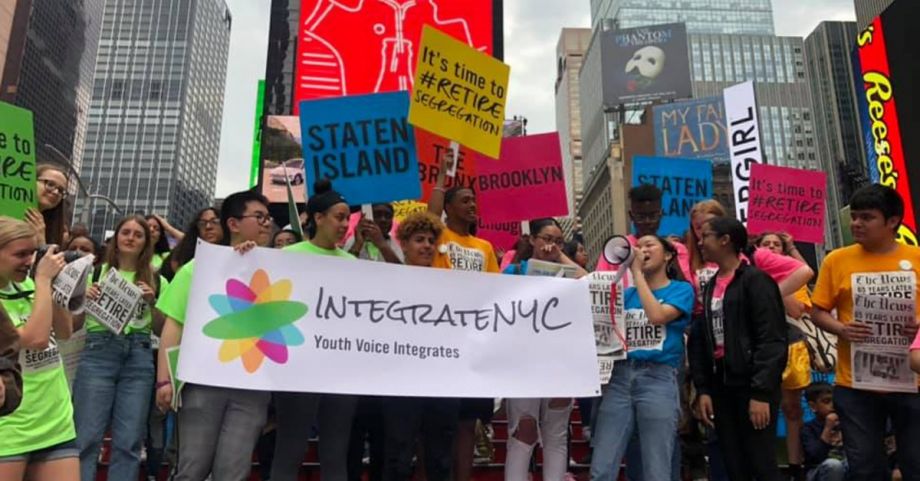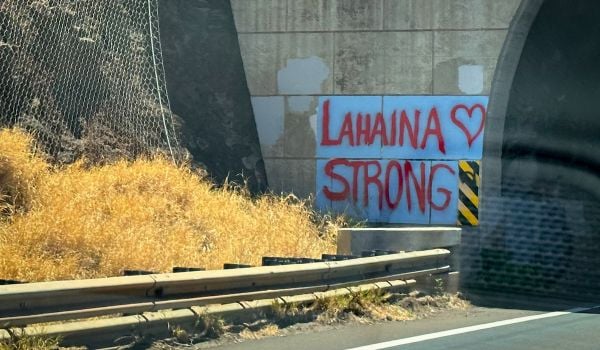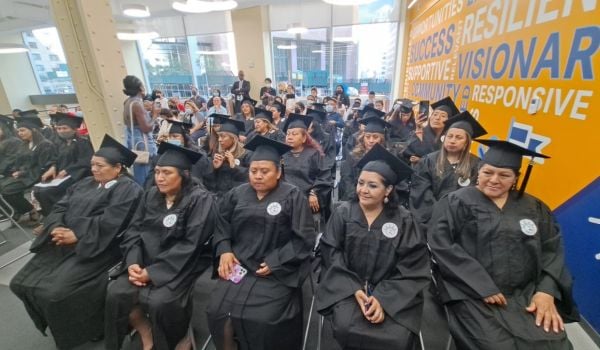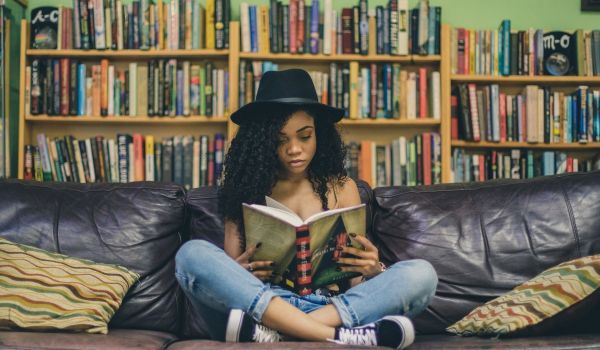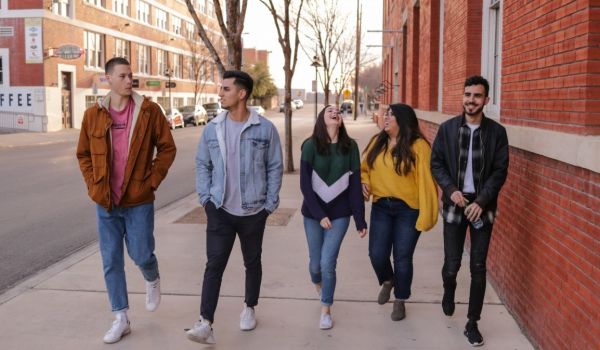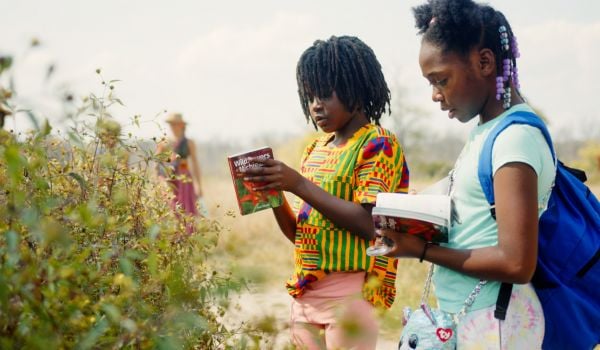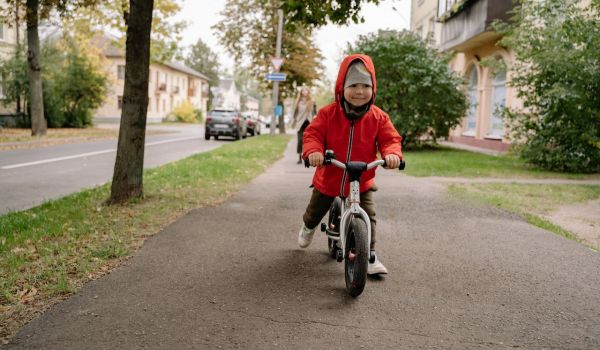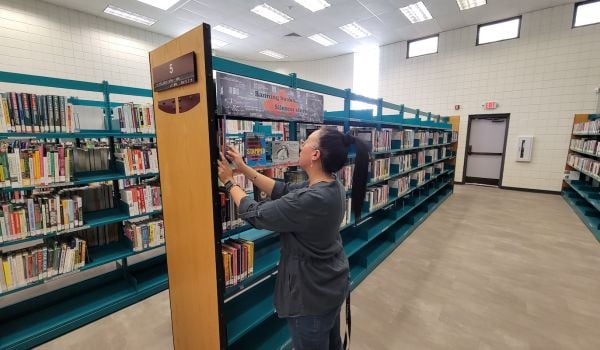Leanne Nunes joined the fight to integrate New York City’s schools — among the country’s most segregated districts — as a 14-year-old student. Throughout high school she worked with other New York City students to address why public schooling is so unequal, particularly calling attention to an admissions process that resulted in the city’s best-performing public schools enrolling dwindling numbers of Black and Hispanic students.
Now she’s preparing to go to college as that admissions process — developed over the last 20 years in New York City — has more or less collapsed. After COVID-19 hit, the metrics that long dictated school admissions, including attendance, grades, test scores and sometimes interviews, promptly disappeared as schools shuttered.
Luckily, in Nunes’ four years of organizing, she and fellow students with the organization IntegrateNYC developed a new model to rethink public schools admissions. And in her final summer before college, she doubled down with IntegrateNYC to factor the impacts of COVID-19 into their proposed model.
“There is no whole-blanket solution for segregation,” Nunes explains. “We’ve worked to shape a model that best fits the community we’re trying to implement policies in. We don’t believe in having something done to us, we want to have a say in how it’s done and why it’s done.”
IntegrateNYC was founded in 2014 to empower students, “the best experts on the impacts of segregation and inequality” in schools, to design and advocate for solutions and transformative policy to dismantle the segregated system.
New York’s admissions process stood out as a top priority. About one-third of the city’s public middle and high schools screen students through various metrics including behavior, attendance and testing. While the algorithm is meant to be neutral, some families spend years touring schools and preparing applications in the hopes their child will secure a seat at a high-performing public school. IntegrateNYC organizers felt the process prioritized children with wealthy families with more resources to navigate the complex system and pay for test prep and consultants.
“One big issue with the algorithm was that many students didn’t know it existed, didn’t know how it worked, and had no idea of the actual data being used,” says Nunes.
In 2016, IntegrateNYC began redesigning the school admissions algorithm with the help of an engineer through MIT, Data 4 Black Lives and the Bleeker Network. The team studied equity-centered algorithms, learned to code, then created a prototype focused on demographics of diversity, like free or reduced lunch status, English-language status and if a parent was incarcerated.
The prototype found some traction. In 2017, the Department of Education established a School Diversity Advisory Group made a formal recommendation to redesign the school admissions algorithm. “But we never got to a place we felt the city would actually do that,” says Matt Gonzales, an adult coach with IntegrateNYC. “The algorithm never got a place where it was sophisticated enough to present an actual policy on this.”
Still, the team didn’t lose focus. This March, as COVID-19 shuttered the public school system, IntegrateNYC watched as the admissions policy’s normal metrics fell away: The mayor nixed attendance as a measure of student achievement for the current admissions cycle, state standardized tests were canceled, letter grades were put on hold for most students. Protests erupting in response to George Floyd also put renewed focus on the city’s segregated education system.
IntegrateNYC made a quick partnership with Zarith Pineda, founder of the nonprofit design collective Territorial Empathy, who had a team of urbanists, data scientists and designers studying the impact of COVID-19 on communities of color. Pineda also knew the uneven burden placed on marginalized families would carry down to their children from previous research on the correlation between public school segregation and racist urban planning policies throughout New York and the country.
The team built upon IntegrateNYC’s admissions algorithm to include the impact of COVID-19 on NYC students. Variables, all based on hardships exacerbated by the pandemic, include the percentage of a neighborhood who is uninsured, how many children live below the poverty line, the average household size and children without computer access, linguistic isolation and COVID-19 infections and casualties.
The community impact analysis culminates in an Admissions Priority Map of the city, which assigns an admissions “priority score” to every student depending on their home address. “The higher the priority score, the greater the pandemic burden on the student’s community and therefore the greater the priority in the admissions process,” Pineda explains. “This unique model acknowledges the disproportionate hardships vulnerable communities have suffered instead of rewarding privilege-reflecting metrics such as standardized tests scores or attendance.”
The map now lives within a larger project released by Territorial Empathy called Segregation is Killing Us, looking at the broader intersection of segregation and COVID-19.
On top of location-based metrics, the team factored in individual student circumstances that may increase or decrease the need for priority consideration. That criteria includes students who receive free or reduced-price lunch, are English-language learners or live in temporary housing.
The idea is that well-performing public schools could allocate space for students with higher “priority scores,” giving those students more options in school choice.“It gives students hit by a system of inequality more agency to navigate the system differently,” as Gonzales puts it.
For Nunes, it was particularly impactful to see IntegrateNYC’s redesigned algorithm come to life. (The team even made a video explaining how the priority score works.) “We have the maps, the visuals, the representations of what we’ve been talking about for years,” she says. “It feels more real.” She calls the map an important tool as it allows students to search their address and visualize different impacts of COVID-19 in the communities they live in. She adds that the individual student circumstances also add nuance to the algorithm that didn’t exist before.
“One of our foundational pieces of IntegrateNYC is ensuring there is accessibility and youth power,” she says. “The data doesn’t have to be boring or hard to understand — it can be interactive and easy to share. To tap into your community helped put a lot of things into context for students on our team.”
Nunes views this work as providing “a really concrete draft” to other students, teachers and the Department of Education on how the admissions process should be re-imagined in the wake of COVID-19 and Black Lives Matter protests. Gonzales envisions the algorithm as leading to an actual policy giving priority school admissions to students most affected by COVID-19.
IntegrateNYC received positive feedback about their work from the Department of Education Office of Student Enrollment as well as an interest in collaborating and developing it further, according to Gonzales. But he expressed doubt any systematic change with the admissions policy would take hold in this mayoral administration due to COVID-19 and lack of interest inside City Hall.
“This is the long game for us,” he says. “If we can get some implementation from this administration, cool, but if not we have to make sure whoever is trying to be the next mayor has their finger on this pulse.”

Emily Nonko is a social justice and solutions-oriented reporter based in Brooklyn, New York. She covers a range of topics for Next City, including arts and culture, housing, movement building and transit.
Follow Emily .(JavaScript must be enabled to view this email address)

